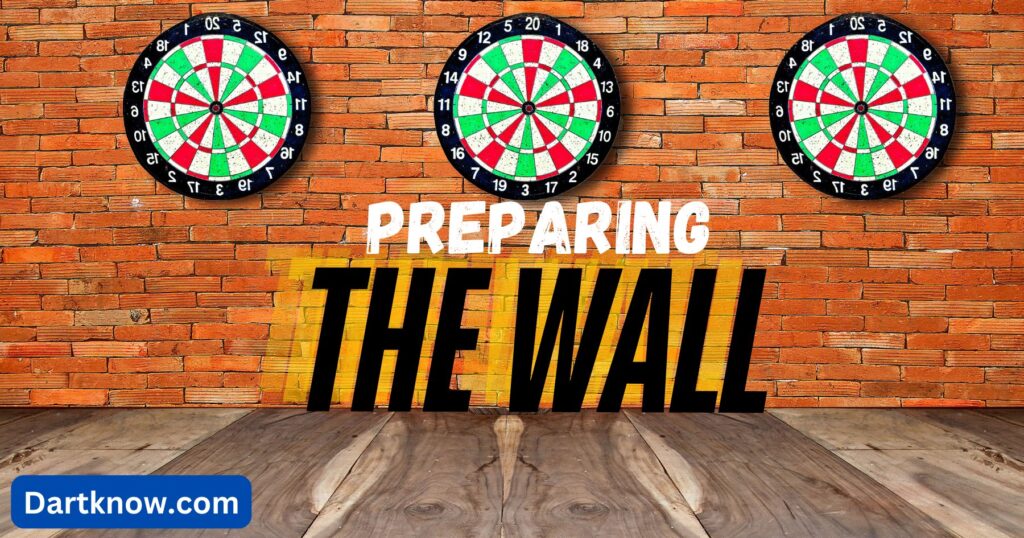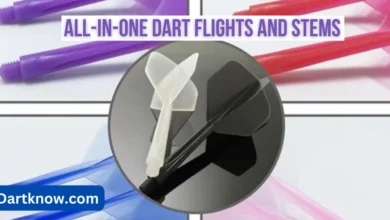How to Hang a Dartboard Cabinet

Both player performance and the board’s lifespan depend on a correctly hung dartboard cabinet. A well-positioned cabinet can greatly improve performance and lower the chance of damage to the darts and surrounding environment. The standard height for the cabinet is 5 feet 8 inches from the floor to the middle of the bullseye. A secure installation also prevents accidents caused by an unstable cabinet that could sway or fall during play.
A few tools and supplies are required for an effective and safe installation when hanging a dartboard cabinet. A level to check cabinet alignment, a drill bit suitable for your wall type, bolts or wall anchors for reliable connection, a stud finder to identify wall studs, and a measuring tape to determine proper height and placement are essential devices. In addition, keeping a pencil nearby for marking can aid in simplifying and improving the installation process.
Selecting the Right Location
Considerations for Space
Room Size: Consider the measurements of the room where your dartboard cabinet will be hung before installing it. Verify that there’s sufficient space for players to toss darts without getting in the way. It is best to have at least 6 to 8 feet of area in front of the dartboard for safe gameplay.
Proximity to Players: Look at the distance the dartboard will have from players or other stuff. Arrange the cabinet so that it may be safely played with enough space between it and furniture and walls to avoid accidents when performing.
Height Recommendations
Standard Height for Dartboards: 5 feet 8 inches is the normal height from the floor to the bullseye’s center when installing a dartboard. To provide ideal performing factors, this measurement works well for a large number of adult players and depends on professional standards.
Adjustments for Personal Preference: While the standard height serves as a guideline, personal preference may play a role in the final placement. If the cabinet is primarily used by younger players or individuals of varying heights, consider adjusting the height slightly to accommodate comfort and accessibility. It’s important that players can easily reach and throw darts without strain.
Tools and Materials Needed

Tools
Drill and Drill Bits: To attach the cabinet, studs must be drilled into the wall using a power drill. Make sure the drill bits you have are suitable for the type of wall you have (e.g., wood bits for wooden frames or stone bits for brick walls).
Level: To make sure that the cabinet is secured correctly, which is necessary for the dartboard to be lined up properly, use a level device.
Tape Measure: This is required to ensure that the cabinet is set up exactly where you want it by providing specific height and width dimensions.
Screwdriver: If your drill does not include a screwdriver connection, you will need one to secure screws properly.
Materials
Dartboard Cabinet: The primary piece you’ll be hanging, ensure that the cabinet reflects the design of your room and your dartboard.
Wall Anchors or Screws: Depending upon the substance of your wall, you could require wall anchors for extra support or screws for stud-to-stud installation.
Stud Finder: Utilizing this tool to find wall studs, you can make sure that your cabinet is securely attached for reliability and safety when in action.
How to Hang a Dartboard Cabinet: Preparing the Wall

Finding the Right Stud
Using a Stud Finder: For identifying the wooden studs in your wall, a stud detector is a required instrument. These studs give you the stability you need to hang your dartboard cabinet properly. All you have to do using a stud finder is run it along the wall until the indication shows that there are studs there. Repeat this process across the intended installation area to identify multiple studs for optimal placement.
Marking the Location: After you’ve identified a stud, lightly draw its center with a pencil. To ensure a tight fit, use this mark as an indicator when making holes for screws or anchors. Be sure to double-check your measurements to confirm that the marked location aligns with your intended height for installation.
Ensuring a Level Surface
Using a Level to Check Alignment: After marking your stud locations, the next step is to ensure that your dartboard cabinet will hang straight. Place a level against the wall at the height you’ve chosen for the cabinet.
Adjust the mark until the bubble in the level is centered, indicating that the surface is perfectly horizontal. Keeping the cabinet level is vital for both the aesthetic aspect and gameplay, as a diagonal board can lead to uneven throws and reduced accuracy.
Installing the Dartboard Cabinet
Marking Drill Holes
Make sure the dartboard cabinet is level and at the proper height before beginning to drill. Push it up against the wall at the correct position. Mark the positions of the screws with a pencil, making sure that they line up with the previous stud markings you made. This prevents any unnecessary drilling and allows for an accurate installation.
Drilling Pilot Holes
Once the drill hole locations are marked, take your drill and select the appropriate drill bit for the wall material. Carefully drill pilot holes at each marked location. A better installation is ensured by the pilot holes, which help direct the screws in and protect the wood from breaking.
Attaching the Cabinet to the Wall
With the pilot holes prepared, it’s time to attach the cabinet. Position the cabinet once more, aligning it with the pilot holes. Push screws through the mounting brackets of the cabinet and into the pilot holes using a screwdriver or powered drill. Make sure the cabinet is securely attached to the wall.
Securing with screws
Be careful not to overtighten the screws once you install them because this could damage the surface of the wall or cabinet. A snug fit will keep the cabinet secure without risking your installation.
Double Checking Level
After securing the cabinet, use the level tool once again to double-check that the cabinet is hanging straight. When the screws are completely contracted, carefully realign the cabinet if you see any misaligned. Checking the level of the cabinet not only improves its aesthetic value but also provides proper gaming.
How to Hang a Dartboard Cabinet: Installing the Dartboard
Placement Inside the Cabinet
For the best playing experience, the dartboard must be positioned in the cabinet properly. The mounting studs or fixtures, which are usually found on the rear of the cabinet, must be aligned up with the dartboard first. Make sure the bullseye is situated at the conventional 5 feet 8 inches above the ground, as previously stated.
The dartboard must fit safely into the cabinet on all sides to provide simple access and protection when not in use. In addition, to lessen the effect of darts and extend the life of your board, consider putting felt or an extra board to the interior of the cabinet.
Ensuring Proper Distance from the Throw Line
For the best playing experience, the dartboard must be situated in the cabinet properly. The dartboard needs to be installed with the mounting studs or fittings first, which are often located on the interior of the cabinet. As mentioned earlier, make sure the bullseye is positioned at the customary height of 5 feet 8 inches above the ground.
To allow for simple access and protection when not in use, the dartboard must fit perfectly inside the cabinet on all sides. In addition, to reduce the effect of darts and extend the life of your board, consider adding felt or an extra board to the interior of the cabinet.
Final Adjustments and Tips
Checking for Stability
It’s important to check the dartboard cabinet’s safety after installation is complete. To see if there is any bouncing or motion:
- Give the cabinet a light shaking.
- Recheck that the screws are securely in place and that the cabinet is correctly attached to the studs if you detect any movement.
- Check the wall’s health as well to make sure there is no chance of harm, and it is capable of holding the required weight.
Recommendations for Maintenance
Regular maintenance is suggested to improve the life of your dartboard cabinet and guarantee ideal playing circumstances. Applying a clean cloth, dust the cabinet’s outside to stop moisture formation that could lead to shifting. Constantly check the components and cabinets for wear indicators and loose screws. Using a protective sealant also helps protect the cabinet’s look if it has a paint or finish. Dart debris removal can improve play and extend the life of the dartboard by making it clean.
Conclusion
It’s time to reward yourself for the effort you put in when your dartboard cabinet has been placed properly. Invite your loved ones around to show off your new setup. Play darts with friends to enjoy the excitement and fun that come with enjoying this ancient pastime together. In addition to being a useful piece of furniture, the cabinet allows friendship and serves as a gathering place.
Playing dart games with friends and family is an excellent means to bond, encourage competitive spirit, and make lasting impressions. Consider arranging regular gaming nights that are accessible to players of all capabilities. Even more interesting choices involve organizing specialized competitions or informal contests. Keeping drinks and food available promotes a friendly environment that fosters friendship and engagement. So grab your friends, get your darts, and get ready for some intense bouts!




